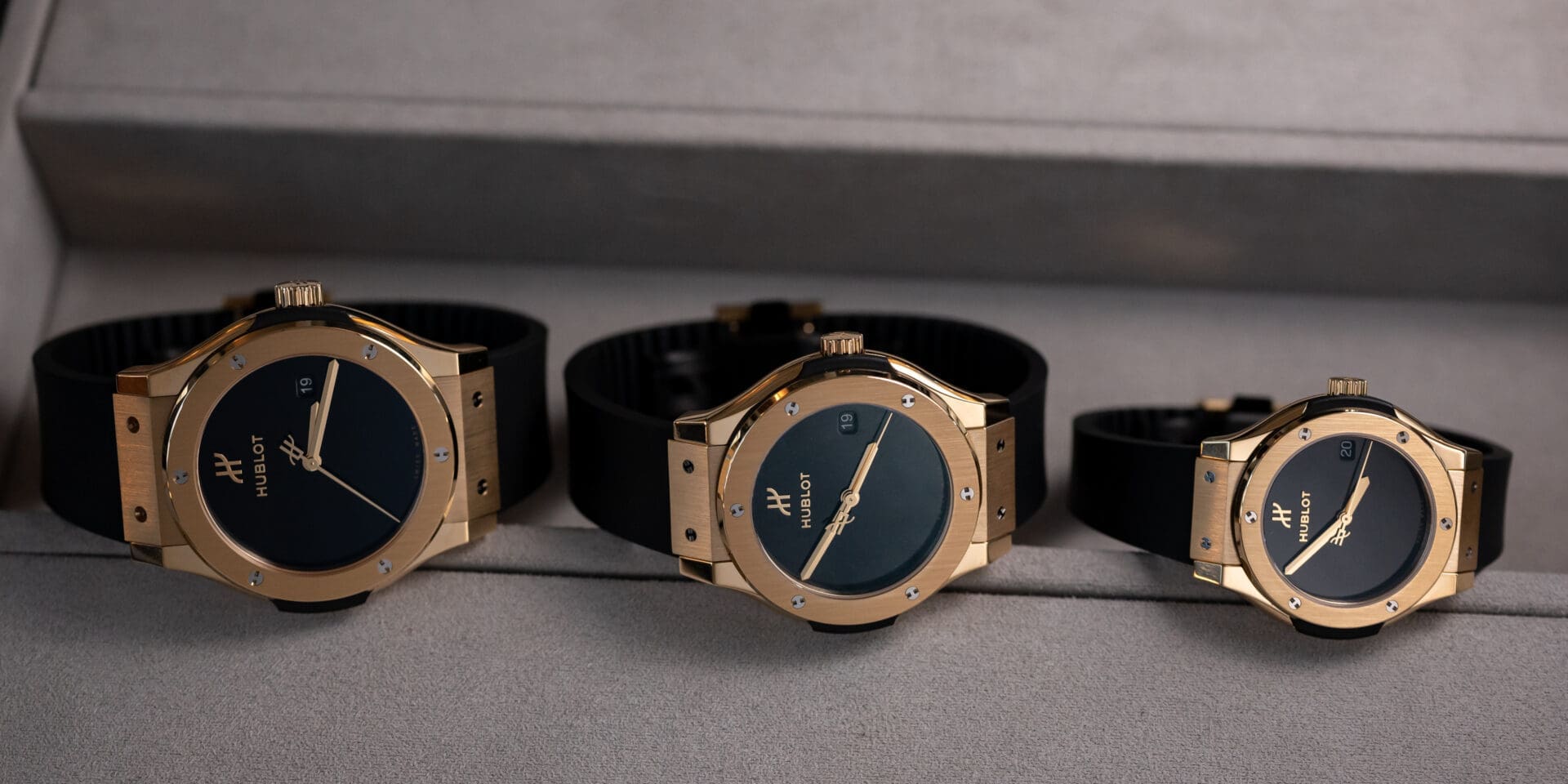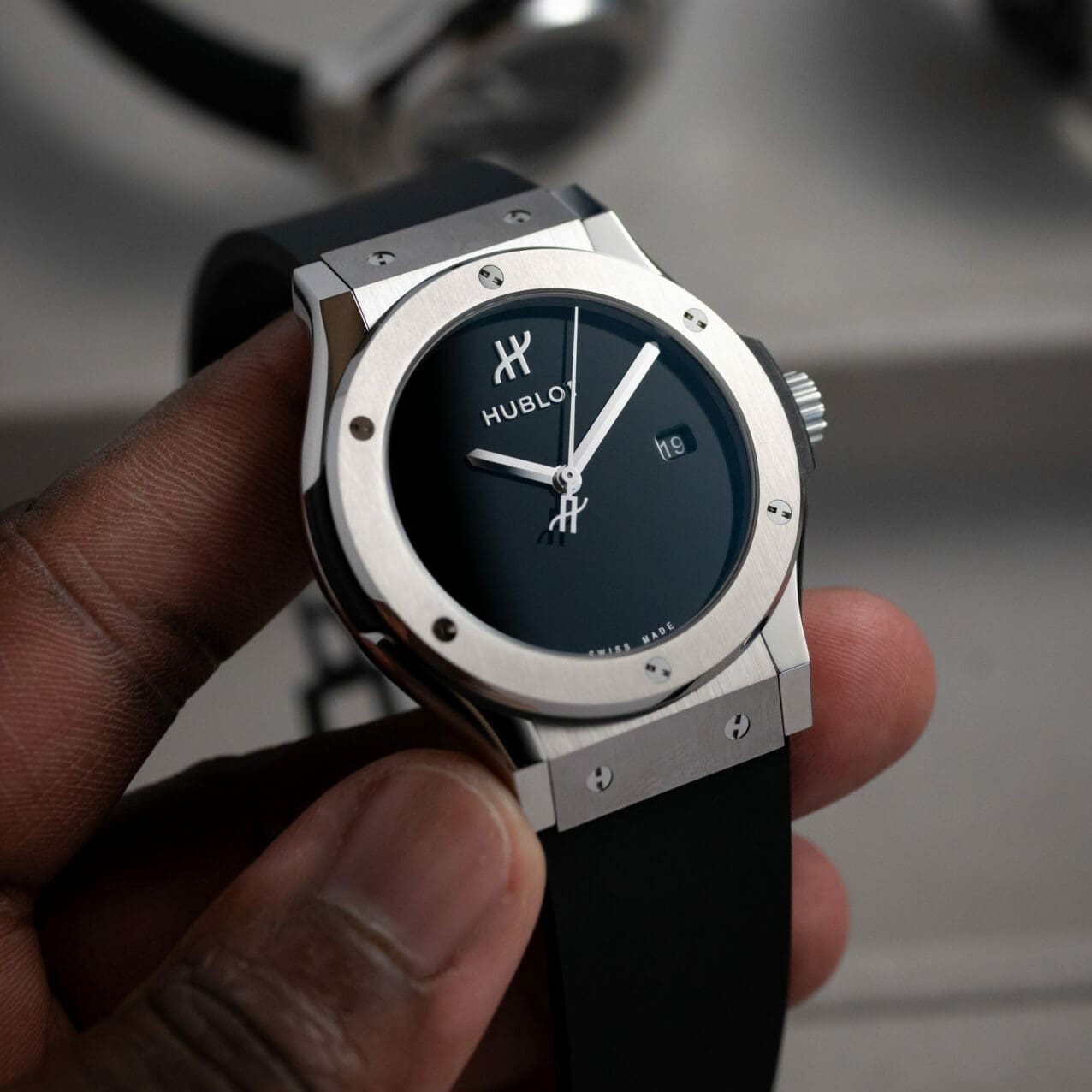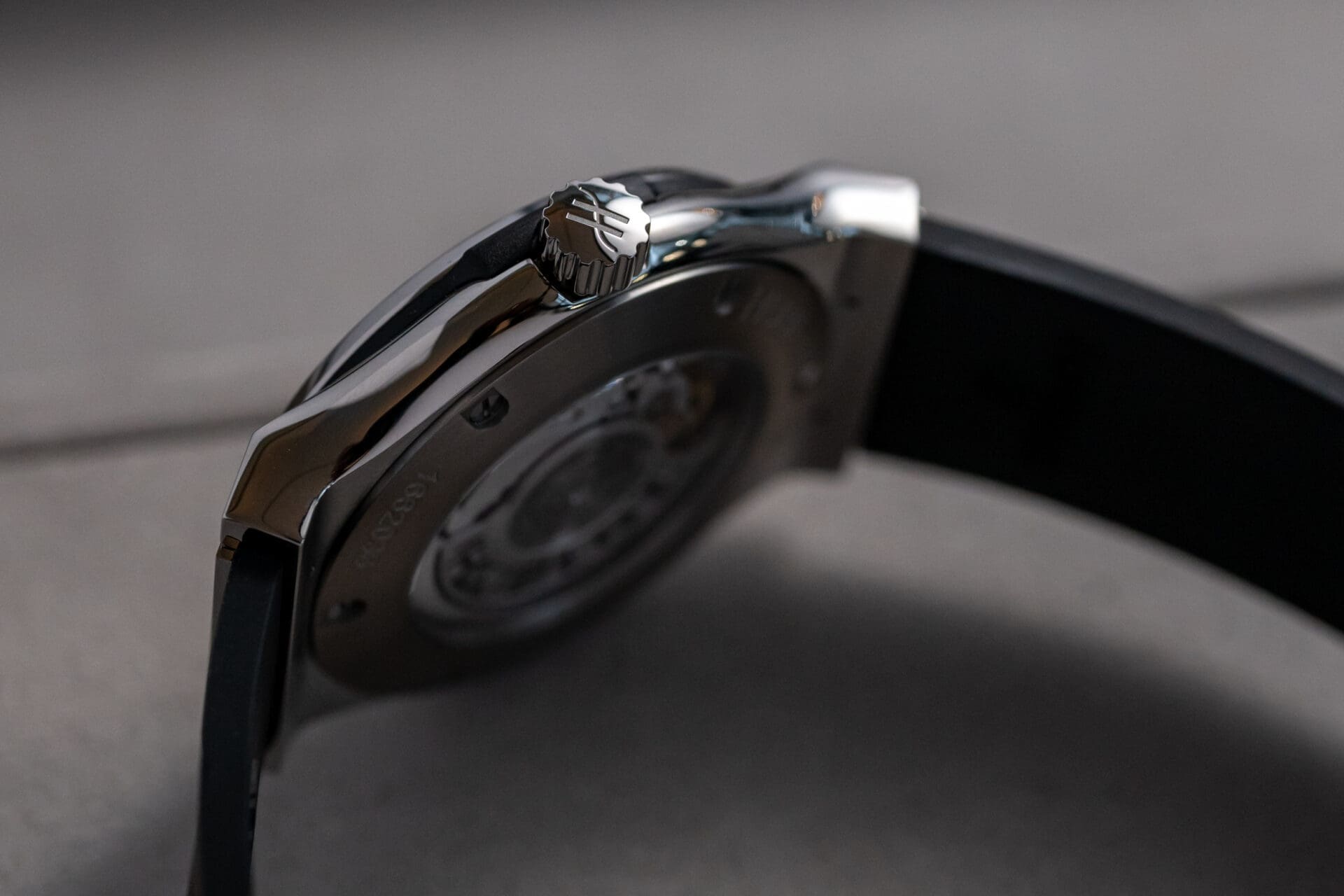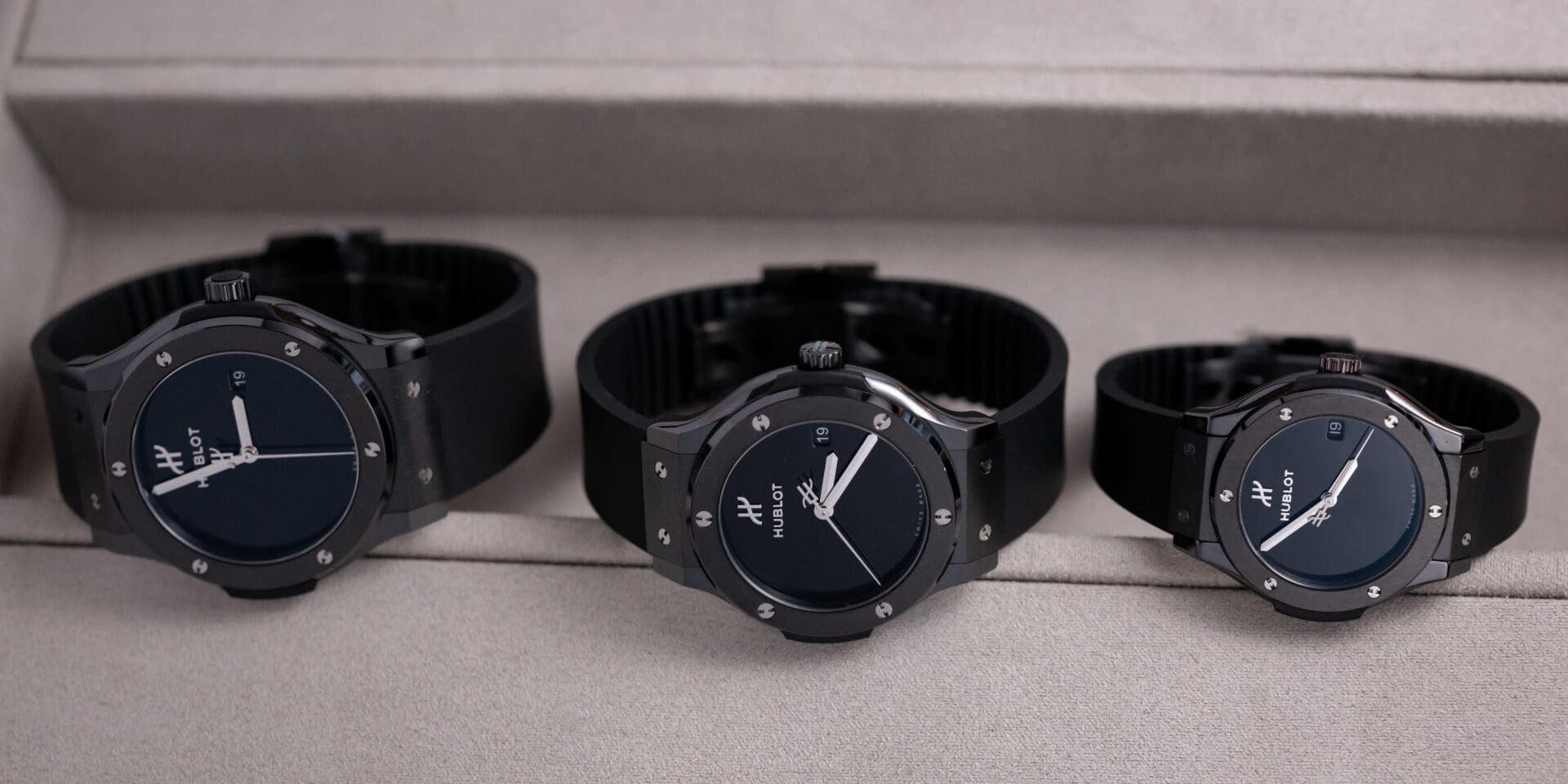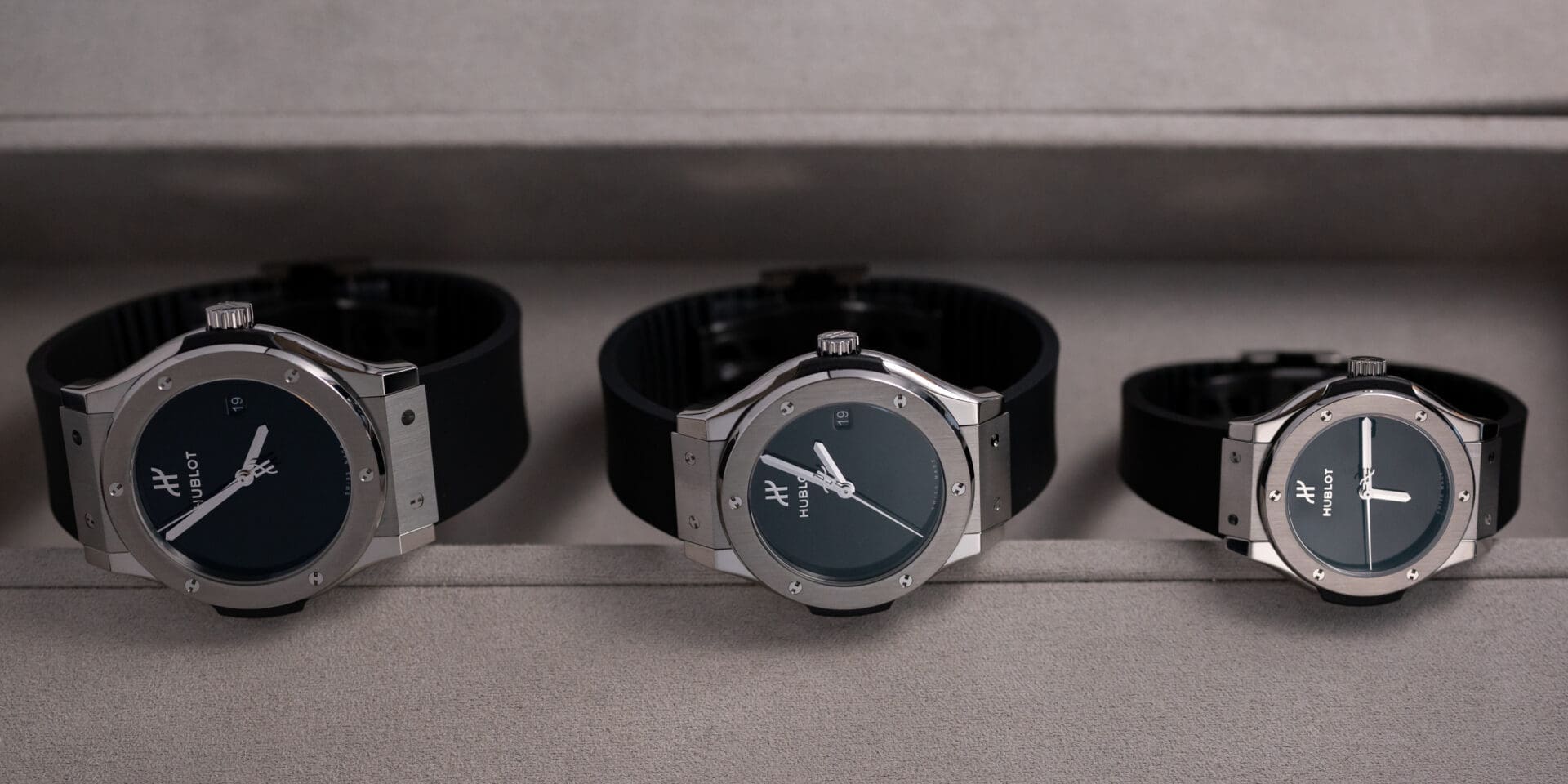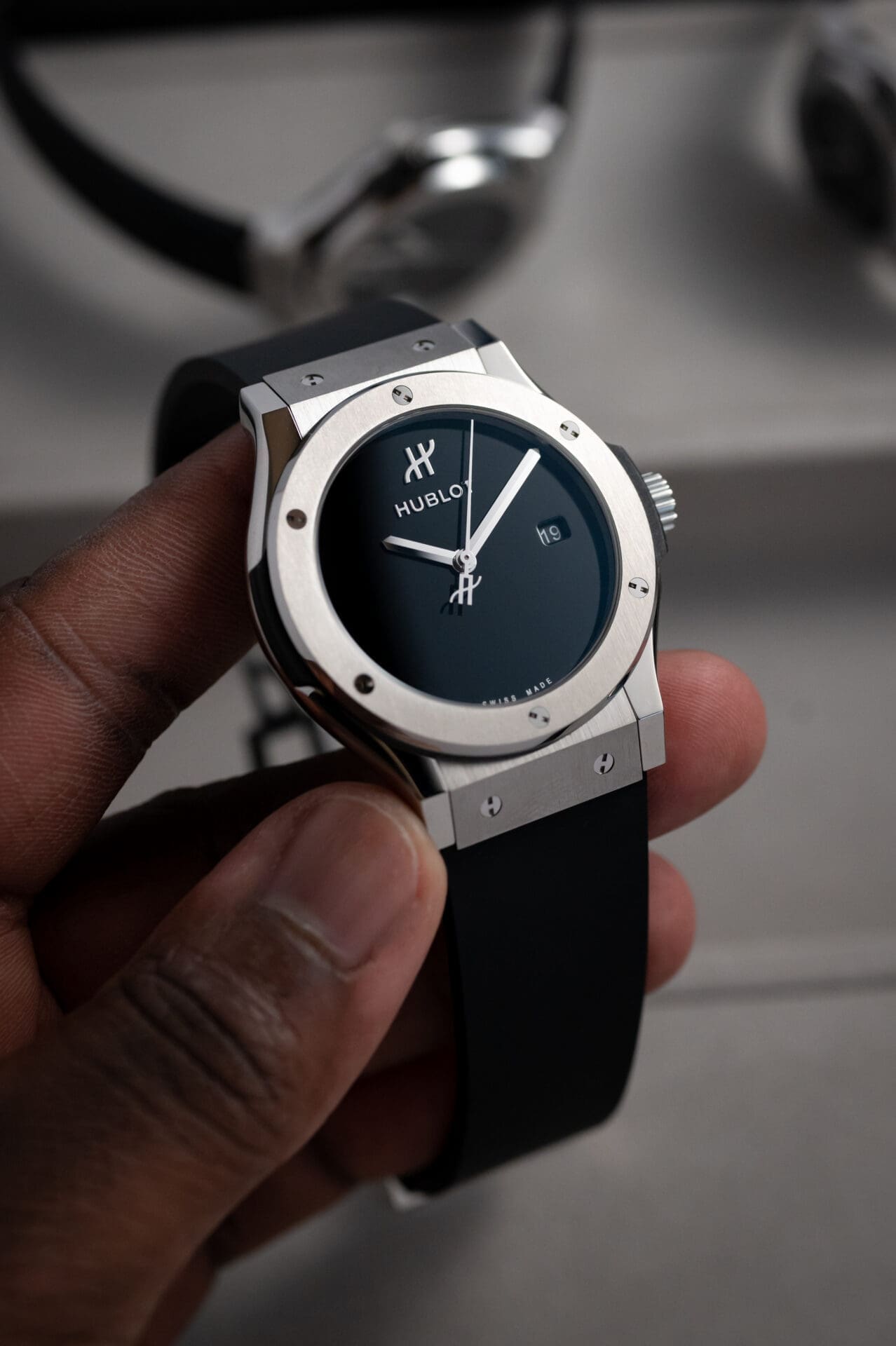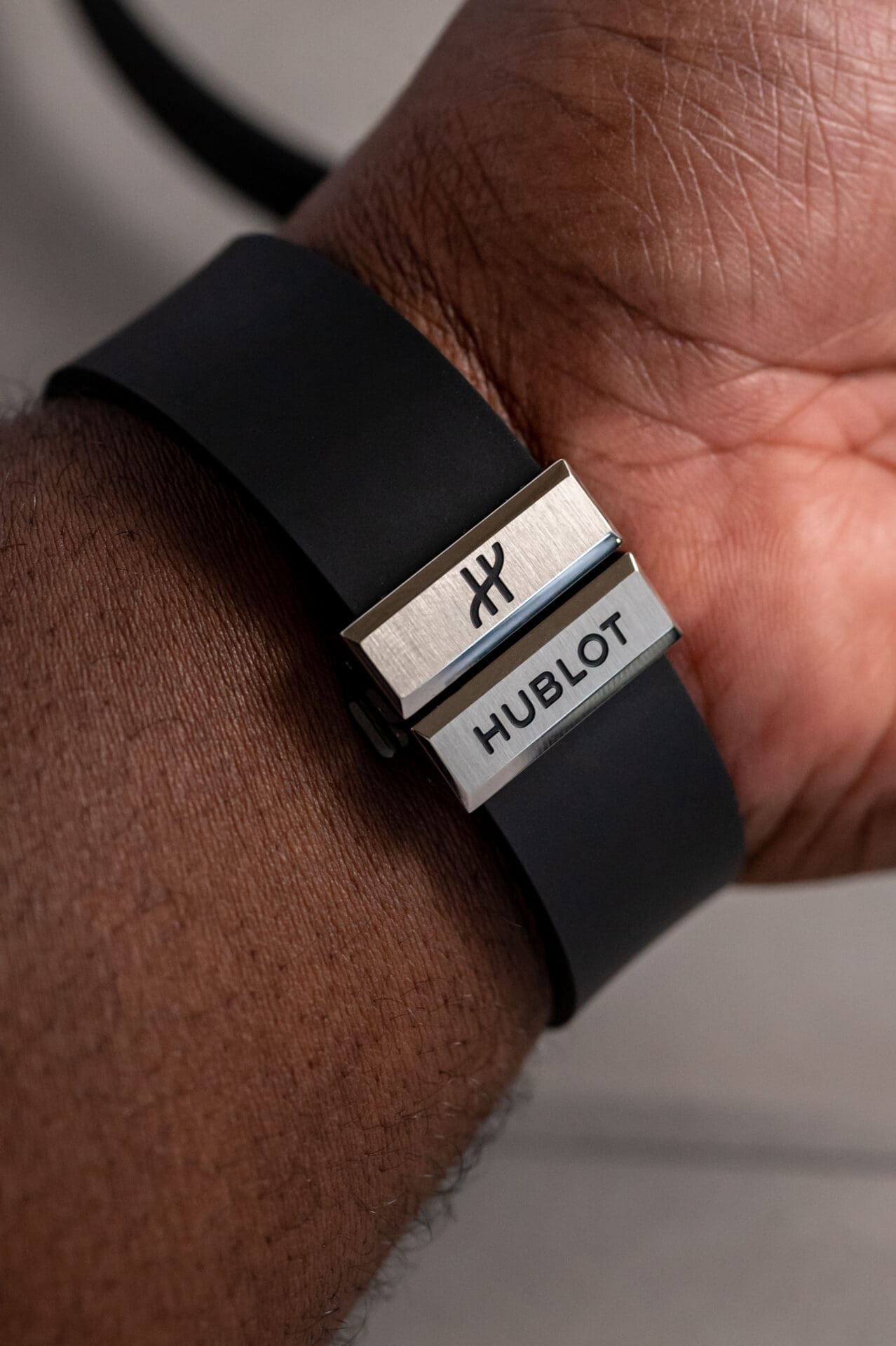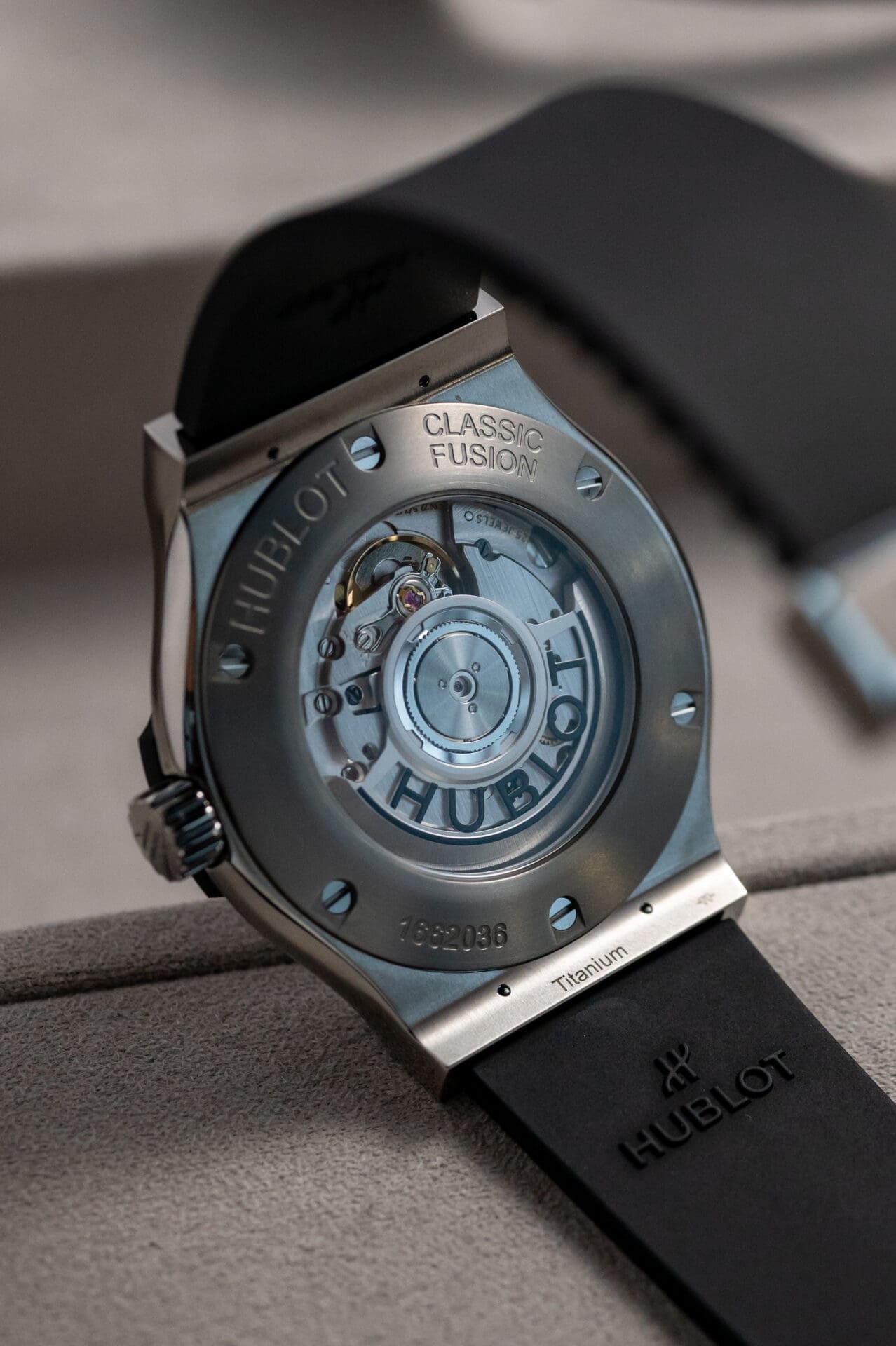Hublot’s revival of the OG Classic Fusion is good. This would make it great…
Zach BlassHublot is known for going wild. Coloured ceramics and sapphires, extreme material exploration, and crazy cool collabs. But this past LVMH Watch Week, amongst the neon-sapphire tourbillons and rainbow-bedazzled Big Bangs, a stand out for me personally was their new Hublot Classic Fusion Original collection. The range, at times, hides in the shadow of their bigger and bolder collections. That being said, while some enthusiast-snobs have gripes with the Classic Fusion, it serves as an entry-level collection for the brand and it is a huge seller for Hublot. Sales volumes aside though, it is also such a core part of their identity – where the journey all began for Hublot. And, without its introduction, the industry and marketplace may not have become what it is today.
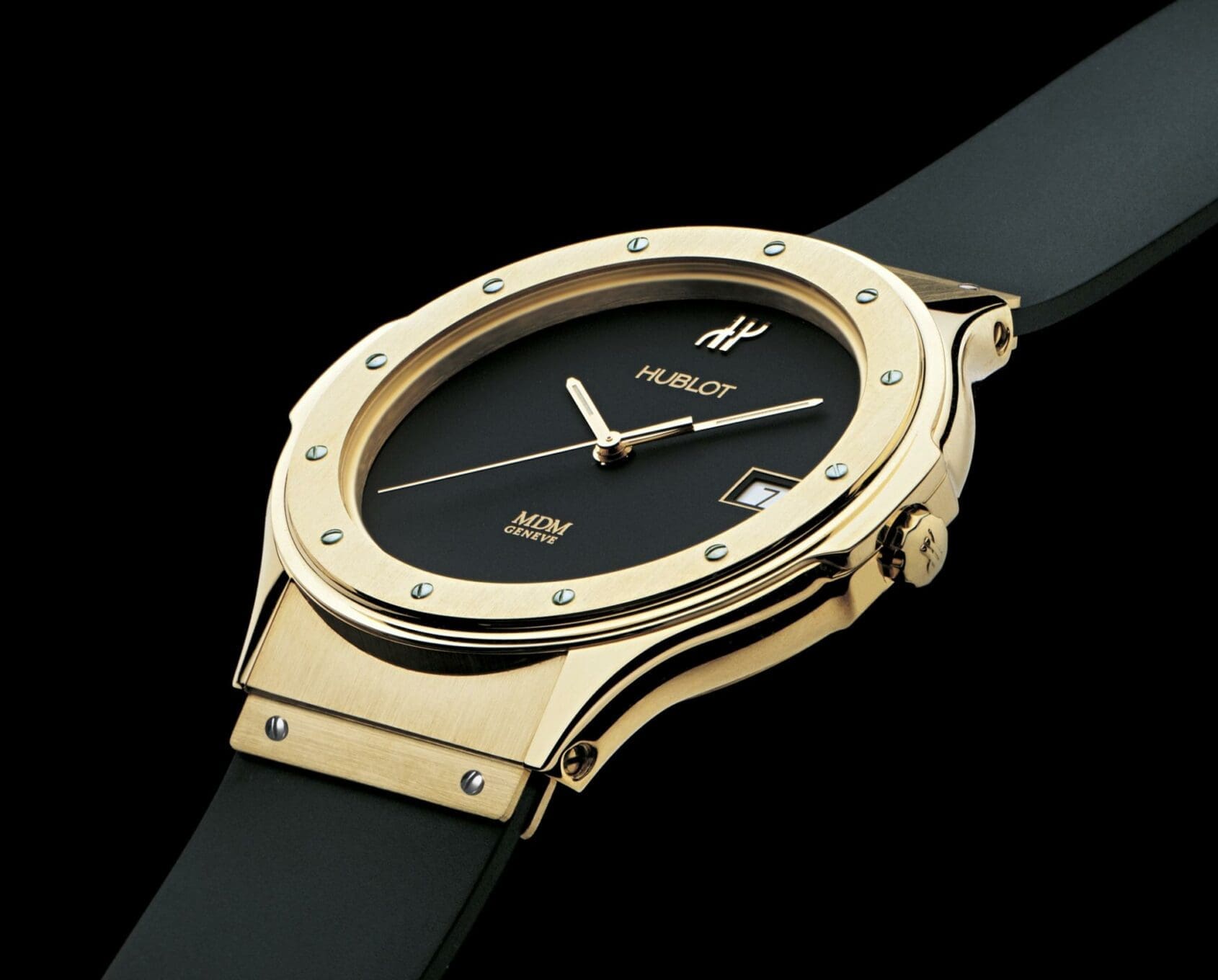
While the idea of luxury watches on rubber straps today is very common, someone had to lead the way and that someone was Hublot. Italians have long been trendsetters in the watch world, and Carlo Crocco, who founded Hublot in 1980, was no exception. Crocco had the foresight to debut a first for the watch industry, pairing a precious metal watch with a rubber strap. Hublot walked the walk, paving the way for brands like Richard Mille to run with luxury watches on rubber. Looking at the above Classic Original, it’s hard to believe today that this Crocco design was so groundbreaking – especially when compared with Hublot’s current catalogue. It is a testament to the brand’s risk-taking and willingness to experiment, that the new Classic Fusion Original collection, inspired by the Classic Original, feels relatively conservative for Hublot. But, considering its historical significance, and its very versatile aesthetic, it is a welcome exercise in restraint.
The cases
Of all Hublot references today, the Classic Fusion has the most size options for every wrist to find their perfect match. Each case size for the new range, 33mm, 38mm, and 42mm, leverage the same style and finish. All of the cases have a slender profile 10mm and below – the 33mm cases are 8.5mm thick, the 38mm cases are 9.85mm thick, and the 42mm cases are 10mm thick. Each display a rich brushing to the top of the bezel and middle section across the case, with the case flanks, lug hoods, and bezel perimeter fully mirror polished. Now, the three sizes are not simply scaled versions of one another when you look at them up close. The smaller the diameter, the curvature of the case – even if just an illusion – appears to be more dramatic as the watch gets smaller.
The purist tribute to the original are the three models in yellow gold. For those aiming to have the closest reincarnation of the Classic Original, as well as commemorate the significance of paving the way for precious metal and rubber to be combined in modern watchmaking, these are the three to explore.
For those interested in a more stealth and fashion-forward vibe, the Black Magic ceramic models is a great avenue to head down. Whether with streetwear, or sporting up your suiting attire, the all-black aesthetic will go with any wardrobe.
Lastly, titanium is on the table as well. The titanium models offer the ability to have a white-metal aesthetic at cost. Between the three case materials, the titanium models are the most affordable.
The dial
Each of the watches, regardless of size or material, have simple polished black lacquer dials to evoke the feel off the Classic Original. It is very minimalist in aesthetic, something we do not normally say about Hublot today. There are no hour numerals or indices, nor an outer minutes track. Just three lume-less hands, and a date complication at 3′. The titanium and Black Magic models have rhodium-plated hands and logo detailing, so the gold models have gold hands and logo detailing, but my one small criticism would be the usage of a white-on-black date disc across all there models. It fully suits the ceramic and titanium models, but for the yellow gold I think a golden gilt-colour for the date numerals would have really tied the look together.
The strap
Returning to original form, the styling of the black rubber strap returns to the smooth format with zero loopholes. The straps have notches on their underside where, incrementally, they can be cut to size. This means that, upon sizing at least, you can really fine tune the fit. But, should your wrist noticeably grow or decrease in size for whatever reason you will have to buy a new rubber strap to cut. Each strap is secured to the wrist by a case colour-matching twin-triggered double-folding clasp.
The movements
In an otherwise near-perfect watch, the only point of contention is its usage of a Sellita-based calibre. Hublot has made their subtle modifications, and added their decorative style, but ultimately it is not the most glamorous movement. It offers a basic (by today’s standards) 42 hours of power reserve, and, regardless of how you feel about the usage of a Sellita-based calibre, it is undeniable that it is a robust and reliable performer. The 33mm models pivot from an exhibition caseback to a solid engraved caseback, covering up the quartz calibre within.
The verdict
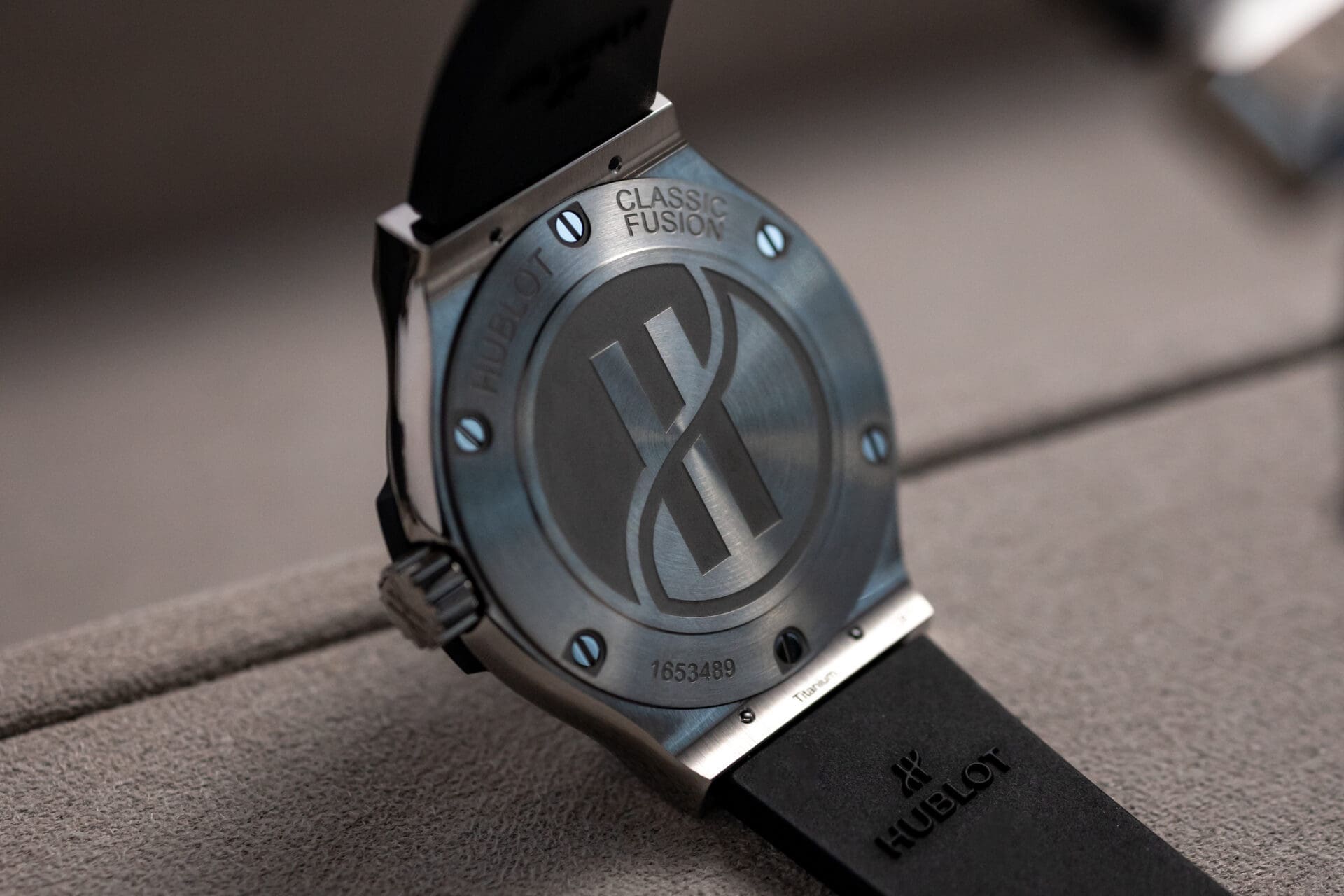
I have no doubt that, as is, this will be a smash hit for Hublot. It will definitely sell in its current state, as it should. As a watch geek though, I do feel there are missed opportunities to silence the niche contingent of detractors. Were Hublot to develop their own movement, which they are fully capable of, or utilise a Zenith Elite calibre as they do in the Big Bang Integral Time Only, the offering would be elevated enough for unanimous applause. The aesthetic and quality of the watch externals is absolutely there, but a movement upgrade and an elevated depth rating from 50 metres to 100 metres with a screw-down crown would make the Classic Fusion Original one of the most well-rounded daily wearers on the market. These tweaks, without raising the price too much, would be an absolute mic drop in my book.
Hublot Classic Fusion Original collection pricing and availability:
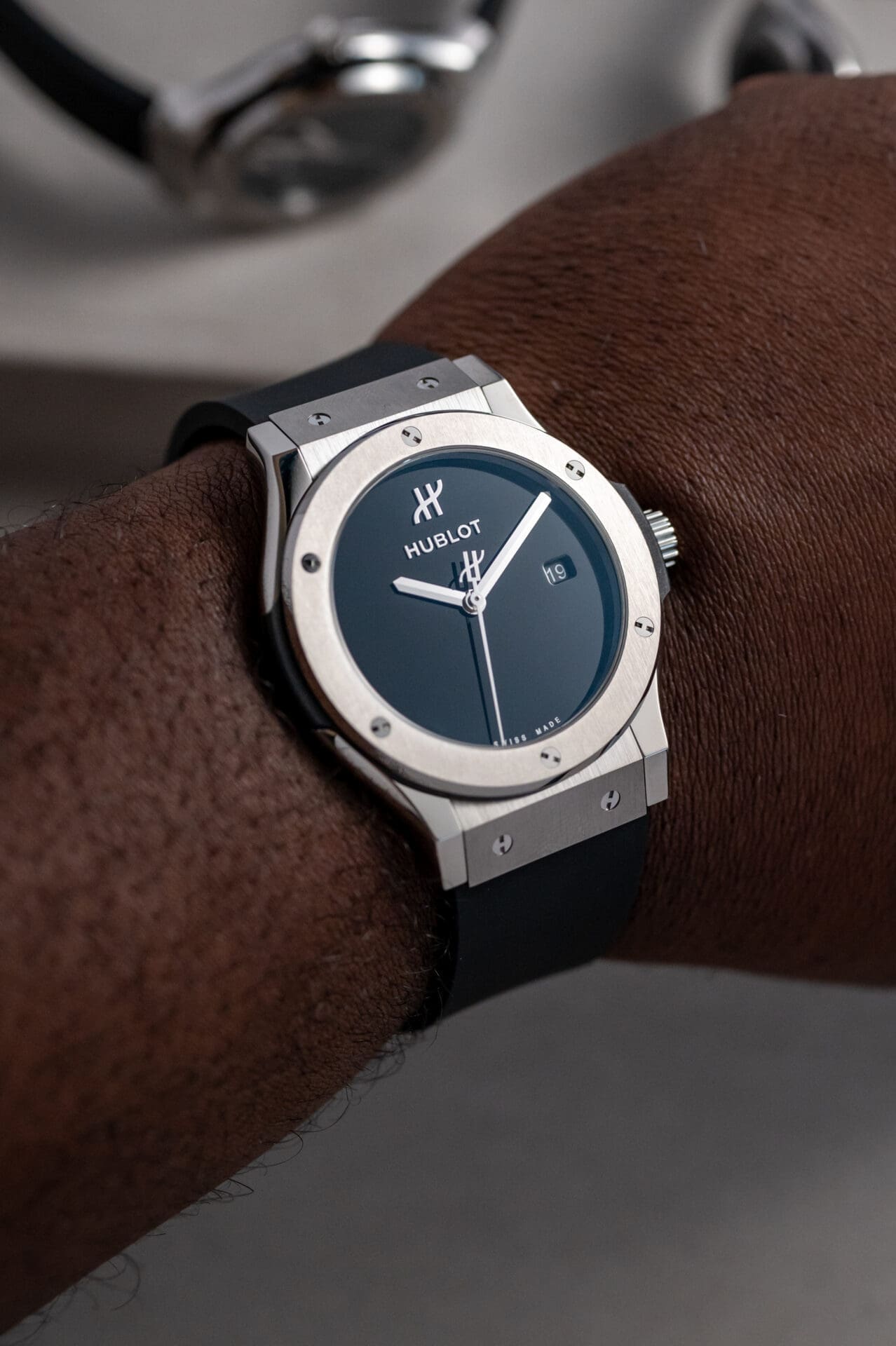
The Hublot Classic Fusion Original collection is available now. Full pricing and specifications listed below.
| Brand | Hublot |
| Model | Classic Fusion Original |
| Case Dimensions | 33mm (D) x 8.5mm (T) 38mm (D) x 9.85mm (T) 42mm (D) x 10mm (T) |
| Case Material | Titanium, Black Magic (ceramic), or Yellow Gold |
| Water Resistance | 50m |
| Dial | Black lacquer |
| Crystal(s) | Sapphire crystal and exhibition caseback |
| Bracelet/Strap | Black rubber with deployant clasp |
| Movement | 33mm: Quartz 38mm, 42mm: MHUB1110 automatic (Sellita-based) |
| Power Reserve | 33mm: 3-5 years 38mm, 42mm: Approx. 42 hours |
| Functions | Hours, minutes, seconds, date |
| Availability | Now |
| Price | 33mm: US$6,500 (Titanium), US$7,300 (Black Magic), US$17,800 (Yellow Gold) 38mm: US$7,900 (Titanium), US$8,500 (Black Magic), US$20,500 (Yellow Gold) 42mm: US$8,200 (Titanium), US$10,000 (Black Magic), US$24,100 (Yellow Gold) |




